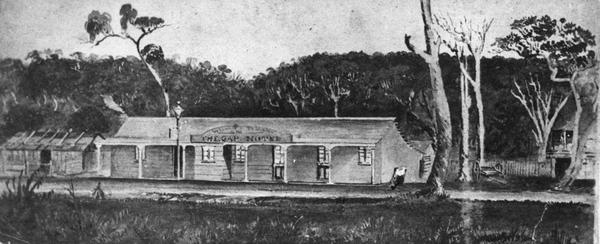Out and About on the Road – with Cr Marika McNichol
Recently, I decided to drive home via the “back road” on Old Stanthorpe Road from Warwick to Stanthorpe, to check out the latest road upgrades.
These upgrades include the widening of the O’Dea’s Road intersection and resurfacing/widening a section of Old Stanthorpe Road. They will increase safety, especially for heavy vehicles travelling to and from the Sibelco Lime Mine and visitors to Cherrabah.
Travelling a little further down the road there is a new section of bitumen road that the Southern Downs Regional Council had recently upgraded and constructed through the Roads to Recovery program, I was pleased how well this windy road was constructed, with wide drains and the extra width of the road to allow more room for traffic, which will increase safety for vehicles using this section of road.
150 years ago this road was a quiet little country road, connecting Warwick to Maryland. In early 1872 traffic on this road increased dramatically due to the discovery of tin in Stanthorpe. About 100 tonnes of tin was carted from Stanthorpe to the Warwick Mill Hill Railway Station every week, taking approximately two days for each trip. Approximately three to four tonnes of tin was carted at a time by horse and dray – travelling at about 5km per hour, making it a long trip. Teamsters would stop at the Gap Hotel overnight. Today a B-double truck carrying 30 tonnes would do the trip in about an hour.
As I ascended a steep hill, I passed through Perrot’s Gap. About 600 metres south of Sand Road I could see the remnants of a small cellar lined with granite stones, about 50 metres inside the paddock, on the western side of the road, this was the Gap Hotel’s cellar.
Part of an advertisement, by Mr William Gilliam, in the Warwick Argus on 16 May 1878, for the sale of his Gap Hotel, stated that it was:
“In the most healthy position in Queensland, eighteen miles from Warwick. The House contains Eleven Rooms all being nearly new, besides detached Kitchen, Dairy (built of stone) 24 ft. by 16 ft., Brick Oven, Well of bilateral water with pump into kitchen. Five Stalled Stable, Hay and Corn Room.
“There is also a Kitchen Garden and Orchard of one acre closely paled which at all seasons of the year will grow English as well as Colonial Vegetables, the climate being, owing to the elevated situation, more like New Zealand than Queensland.
“There are also stock yards, milking pens, killing yards &c. Cobb and Co. Coaches pass the door twice a-day, and change horses at the hotel and the ‘Gap Hotel’ is the stage for breakfasting of the passengers by the coach leaving Warwick every morning” (the Cobb and Co. change station was to the south of the hotel).
The advertisement also stated: “The traffic on the road will always increase as it is the great highway from Queensland to N.S.W. and is the only road from Warwick to Maryland, Stanthorpe, Vegetable Creek and Tenterfield”.
On 3 May, 1881, after nine very busy years of heavy traffic on the road, the railway to Stanthorpe was opened, the hooves of the galloping Cobb and Co. horses could be heard no more, and the Gap Hotel’s business plummeted as progress of new rail transport took over.
Roads and transport are such an integral part of our lives and travels, they are as important to us today as they were in days gone past. Our Southern Downs region is steeped in history and present day expansion.
I would like to thank Mr Graham Gillam, William Gilliam’s great nephew, for the photo and information he provided for this article.








